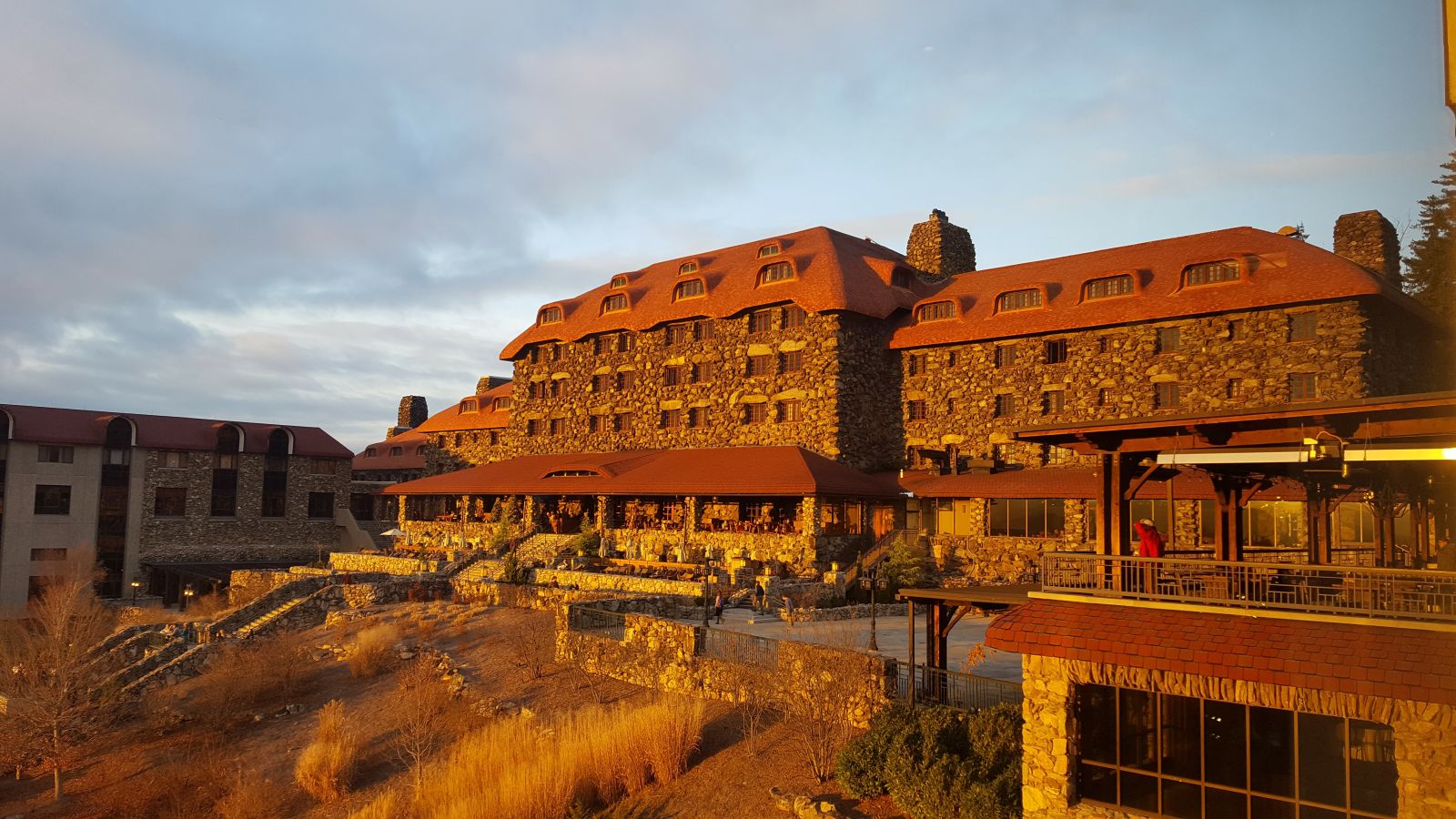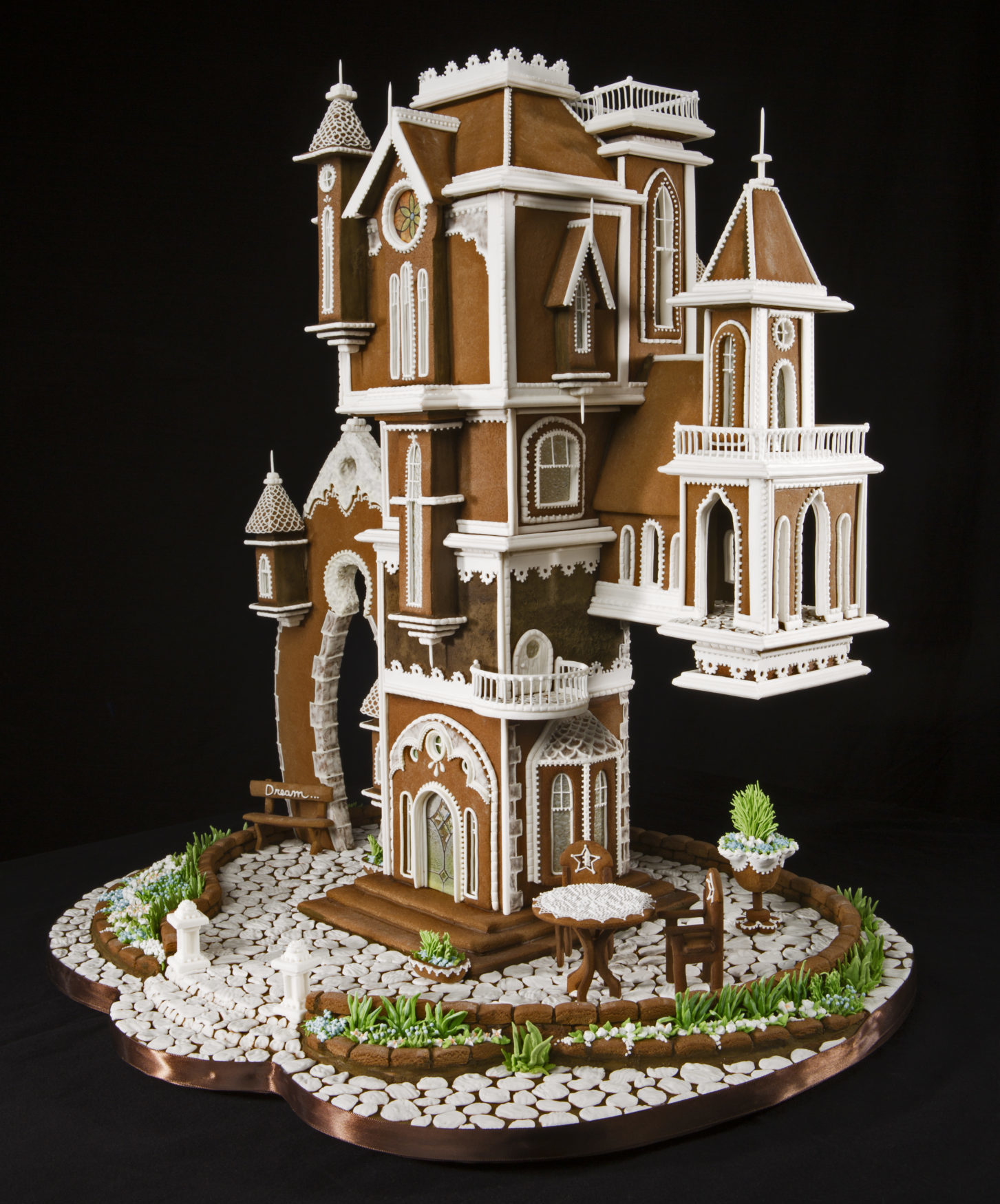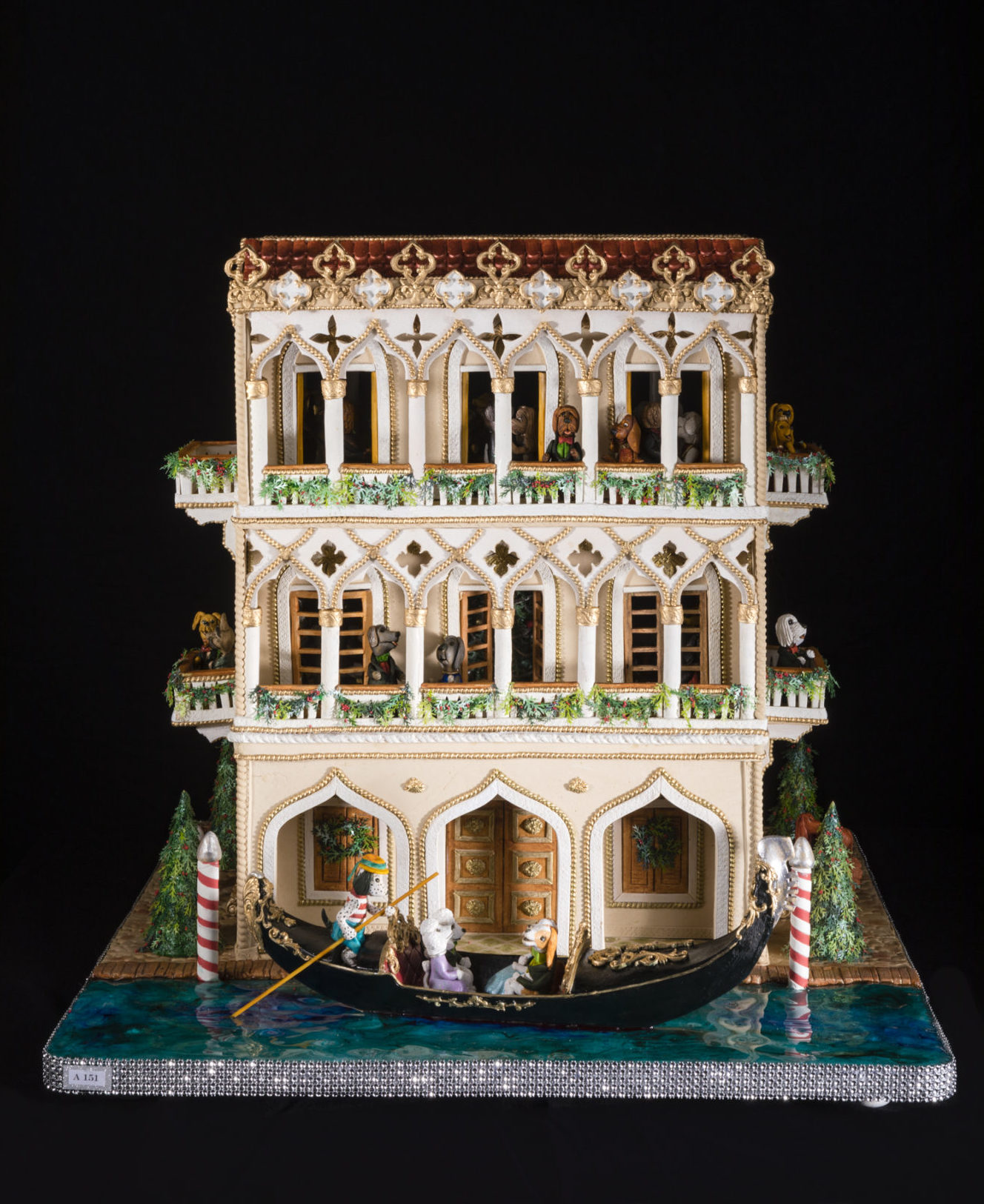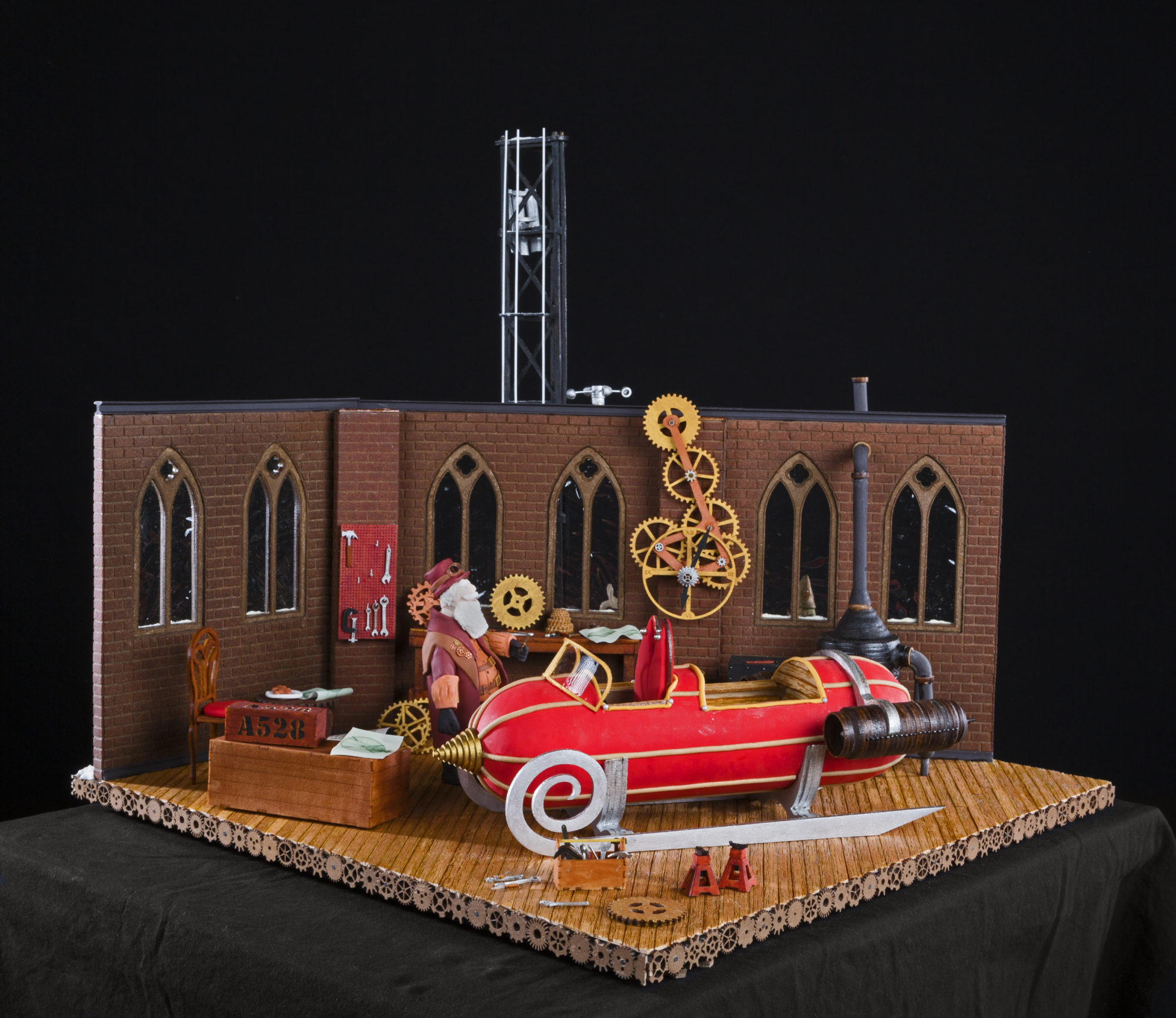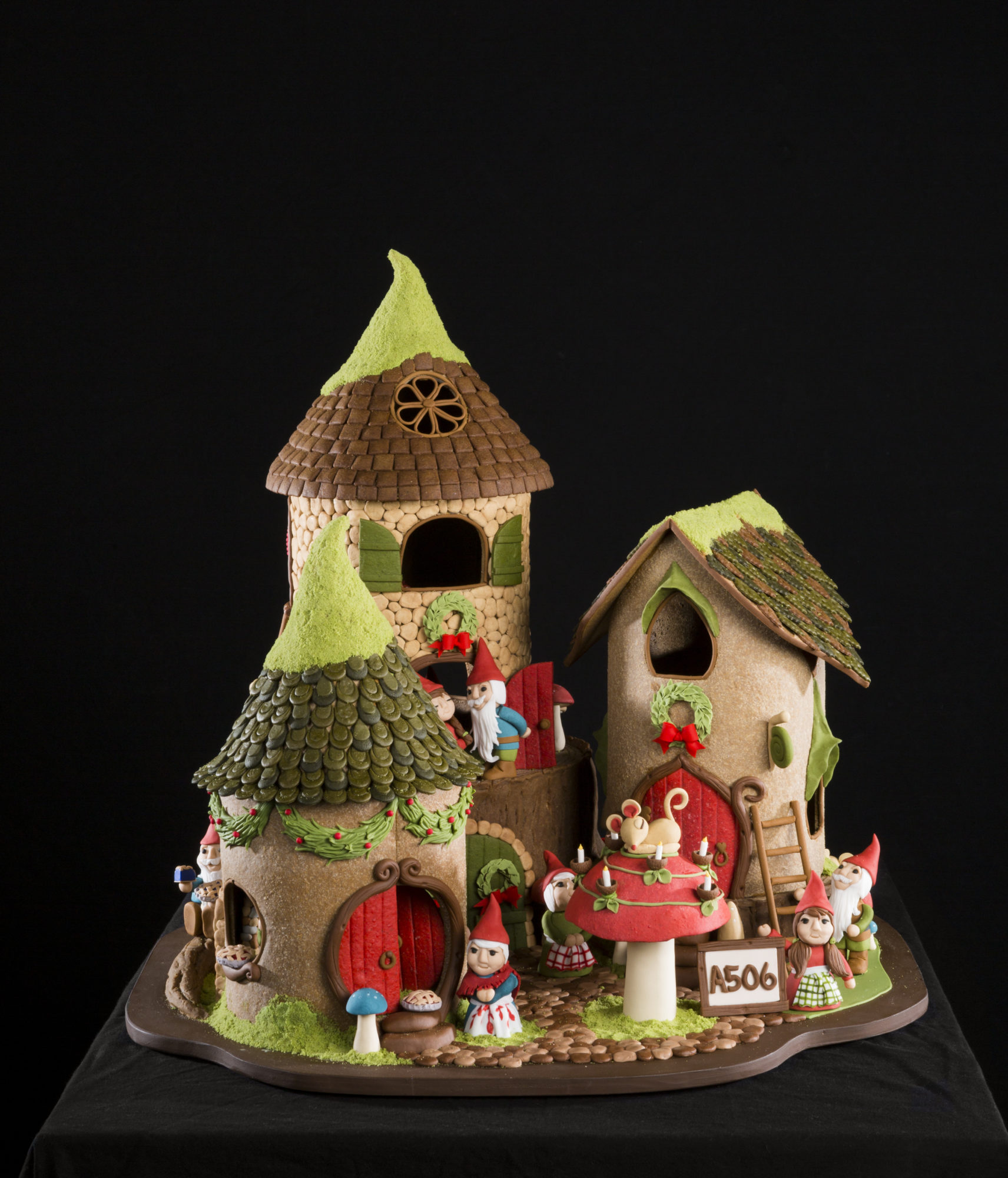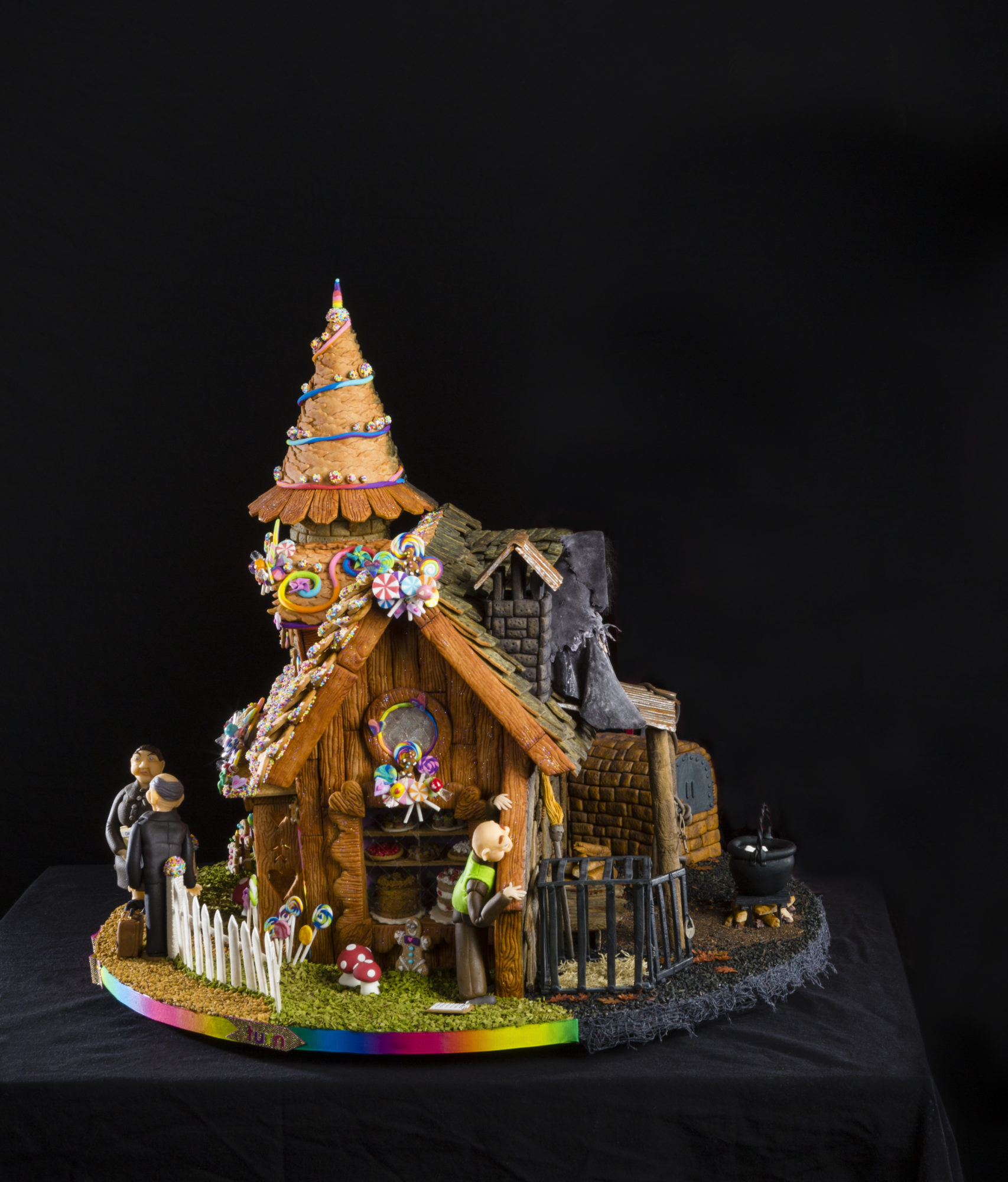The National Gingerbread House Competition™
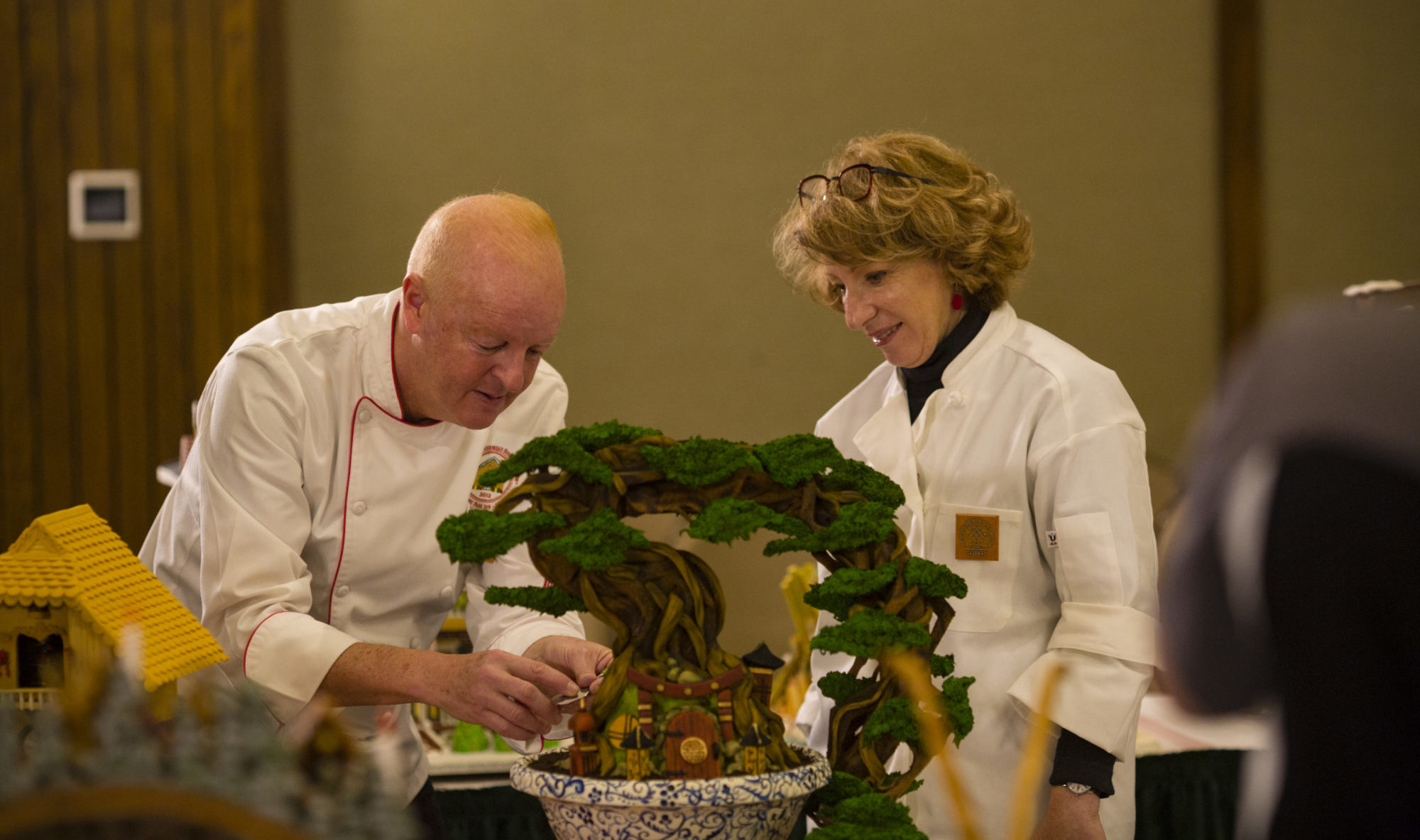
courtesy of the Omni Grove Park Inn
Share:
Talking (with a Gingerbread Craftswoman)
Over the phone, she tells me about her experiences in college, the TV shows she’s been watching, her life. Mostly, she tells me about the process: sanding, shaping, chiseling, baking.
The conversation concludes with a confession: “I’ve been working on it the whole time we’ve been speaking.” With her left hand she had been holding the phone. With her right, she had been adjusting pieces of her gingerbread house.
I will go to the 26th Annual National Gingerbread House Competition™, because I have gone the past three years. Because my friend, Moogsley, competes in it.
Before hanging up, we confirm our plans. Sunday, I will get to Asheville, NC in time for the reception. Monday, the judges will examine the entries. A winner will be announced.
Gingerbread Houses: A Brief History
Then they came to a little house made of bread with cake for a roof and pure sugar for windows.
‘Let’s sit down and eat until we’re full,’ said Hansel.
– The Brothers Grimm1
Though ginger found its way to Ancient Rome in the first–century, via the Silk Road, the practice of shaping ginger-spiced bread into unconventional figures might have begun with Germanic monks around the thirteenth–century.2 Guilds of master gingerbread-makers sprang up in regions of what is now Germany. 3
Some cookbook writers and culinary historians speculate that the custom of shaping gingerbread into houses developed in Germany after or around the publication of “Hansel and Gretel” by The Brothers Grimm.4 In German, gingerbread houses are sometimes called Hexenhäuschen, which translates to English as literally “witch’s cottage.”5
The Omni Grove Park Inn [courtesy of the Omni Grove Park Inn]
The Omni Grove Park Inn: Arrival
The highway through the forest was lined with buildings: stores selling furniture, home decorations, or hardware. Every so often, the two-lane highway widened to three or four, and the relentless neon lights of fast-food restaurants would appear.
At a gas station, I munched on pistachios and watched numbers rise manically on the pump, shivering slightly.
I arrived to Asheville in the wintry dusk of 6 pm. I went directly to The Omni Grove Park Inn, where the 26th Annual National Gingerbread House Competition™ is held.
A vast resort hotel, whose former patrons include: Thomas Edison, Henry Ford, Béla Bartók, F. Scott Fitzgerald, Michael Jordan, and ten United States presidents. Erected a year before WWI began, its exterior of jagged stone was built in an Arts and Crafts style. In accordance with Arts and Crafts principles, which championed the natural over the artificial, manual over mechanical production, local materials over remotely-sourced ones, the Omni Grove Park Inn (originally known as simply the Grove Park Inn) is composed of lumber and roughly-hewn stone native to Asheville. “Not a piece of stone was to be visible to the eye,” said Edwin Wiley Grove, the Inn’s architect, “except it show the time-etched face given it by thousands of years of sun and rain.”6 With its red-tiled roof, irregular granite, and mountainous setting, The Omni Grove Park Inn has the rustic, cozy look of a medieval cottage, alpine lodge, or gingerbread house.
The Omni Grove Park Inn: The Skyline Room & Lobby
The opening reception is hosted in “The Skyline Room”—an enormous space with broad windows exposing the darkening mountains beyond. Bright overhead lights illuminate the room, where some 100 competitors, friends, and family sit at circular tables topped with white cloths, picking at food, exchanging greetings, chatting. Christmas sweaters are in abundance.
A table in the middle of the room is host to a curious combination of mild cheeses, hot cocoa, pita bread, and hummus with the consistency of applesauce. Christmas music plays from loudspeakers overhead, washing over those of us waiting in line for food.
After the reception we—Moogsley, friends, and I—climb a staircase from the Skyline Room to the hotel lobby. An enormous gingerbread house has been constructed around the perimeter of a bar. People take photographs before a large, illuminated Christmas tree. A man plays loungey renditions of popular songs on guitar. Young vacationing couples sit close together in leather chairs beside grand stone fireplaces, looking into the flames, or at their phones, while sipping drinks.
Grand Prize 2016: Beatriz Müller [courtesy of The Omni Grove Park Inn]
Adult Category, 2nd Place 2017: Glenda Tant, [courtesy of The Omni Grove Park Inn]
Gingerbread Architecture Theory
Eyes closed, imagine a gingerbread house. You likely see a boxy, single-room structure with a triangular roof. Maybe the roof is decorated to represent ceramic tiles or wood shingles.
Surely this ideal form has to do with simplicity. It’s a design easily executed, and recreational gingerbread house makers may desire ease. It’s also the form of the homes inhabited by common people throughout medieval Europe. Perhaps it is the half-timbered house—the Tudor house of England, fachwerkhäuser of Germany, or maison à colombages of France—which remains the standard model for gingerbread houses.
Even when gingerbread house construction is taken to the grand scale and gravitas of entries to the National Gingerbread House Competition™, the designs remain rooted in a European past. The winner of the 2016 competition built a miniature Victorian mansion, fit with Gothic-Revival lancet windows, multiple turrets, and the lacelike trim of Carpenter Gothic homes. The second-place winner of the 2017 competition developed a Venetian Gothic palace, replete with white columns, trefoil arches, and quatrefoil molding.
The National Gingerbread House Competition™
In an enormous ballroom, rows of long tables stand topped with scores of gingerbread houses. Earlier that day several judges, including celebrity chef Carla Hall and Nadine M. Orenstein, a curator specializing in 17th-century Northern European prints and drawings at the Metropolitan Museum of Art inspected the homes. They evaluated each structure on (1) Overall Appearance, (2) Originality & Creativity, (3) Difficulty, (4) Precision, and (5) Consistency of Theme.
We—hundreds of us—await the announcement of the grand prize winner, as Food Network personnel traipse around the ballroom with cameras, clipboards, and walkie-talkies. An announcer, standing atop a stage, speaks brightly into a microphone, announcing first the child winners, then the youth winners, then the teen winners, building up suspense for the disclosure of the adult champion.
Grand Prize 2018: Julie and Michael Andreacola [courtesy of The Omni Grove Park Inn]
The Announcement I: The Winner
Romance is immortal. Industry in the machine age can only become a machine without it.
– F.L. Wright7
The winners are Julie and Michael Andreacola, a couple from North Carolina who built Santa’s workshop.
Unlike many former winners, their creation features representations of industrial technologies. There’s an aerodynamic bobsleigh, equipped with rockets and sled blades. Chunky, interconnected gears are found along the gingerbread floor and walls, which have been meticulously shaped and painted to resemble red bricks to suggest an industrial, factory setting.
Yet the technology is rendered anachronistic, retro–futuristic, steampunk even, by proximity to the Gothic double-lancet windows. Perhaps this allusion to Gothic architecture is meant to maintain a romantic Christmas spirit––casting warmth and mystique upon the gingerbread machinery.
This gingerbread house, like many hexenhäuschen before it, renders festive that which might ordinarily be discomfiting —witches’ homes and industrial machinery—through odd juxtapositions and most of all, saccharine building materials.
The Announcement II: Hope
Moogsley does not win. But she does not fret. At 22, she might be the youngest competitor in the adult category. After the ceremony, when the audience is free to inspect the houses, she will be interviewed by Food Network. Next year she will return, and so will I.
Adult Category, Top 10: Rebecca Grizzle [courtesy of The Omni Grove Park Inn]
Adult Category, Top 10: Pat Asheley Howard [courtesy of The Omni Grove Park Inn]
References
| ↑1 | The Brothers Grimm. The Original Folk and Fairy Tales of the Brothers Grimm: The Complete First Edition, trans. Jack Zipes, (Princeton: Princeton University Press, 2016), 46. |
|---|---|
| ↑2 | Apicius, Apicius De Re Coquinaria, trans. Joseph Dommers Vehling, (New York: Dover Publications, 1977), 299. |
| ↑3 | Reimer, Margaret Loewen. Approaching the Divine: Signs and Symbols of the Christian Faith (Pittsburg: CMU Press, 2017), 30. |
| ↑4 | Bragdon, Allen. The Gingerbread Book (Chicago: Allen D. Bragdon Pub, 1984), 9. |
| ↑5 | Davidson, Alan. The Oxford Companion to Food (Oxford University Press, 2014), 461. |
| ↑6 | “Grove Park Inn,” National Park Service, accessed December 18, 2018. https://www.nps.gov/nr/travel/asheville/gro.htm |
| ↑7 | Wright, Frank Lloyd. Frank Lloyd Wright on Architecture, ed. F. Gutheim. (New York: Duell, Sloan and Pearce, 1941), 242; reprinted from Architectural Forum, May, 1930. |
